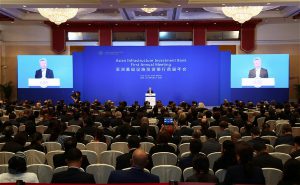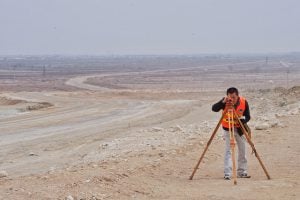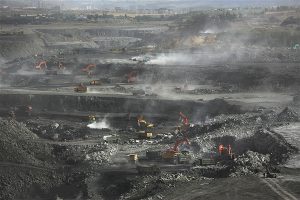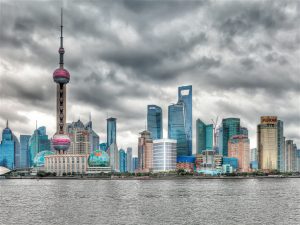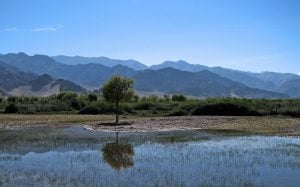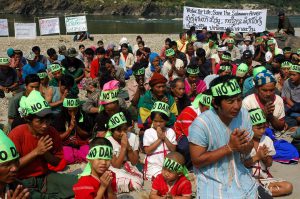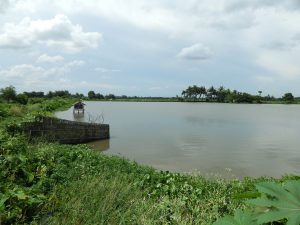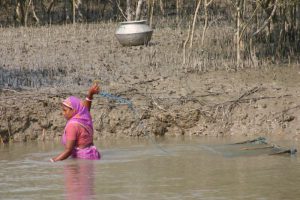The Asian Infrastructure Investment Bank (AIIB), which is led and largely funded by China, has closed its second public consultation on its future energy strategy.
Since the bank’s creation in January 2016, its energy plan has been widely regarded as a key test of AIIB president Jin Liqun’s commitment to making the bank “clean, lean and green”.
Particular attention has focused on whether the bank will prioritise investments in low-carbon renewable technologies or in fossil fuel energy sources, such as coal, which can deliver low-cost, quick wins on energy access but which have long term environmental consequences.
Investing in “modern energy”
Since October 2016, the bank has published two drafts of its energy strategy and held two month-long public consultations. It’s worth considering the type and scale of the problems the AIIB is trying to address. The bank’s first draft of the strategy stressed that two billion people in Asia still rely on solid fuels such as biomass and that 460 million lack access to electricity.
For these reasons, the development bank’s commitment to “green” is tempered by the pressing need to improve energy access and security.
This would also explain the rather ambiguous phrase “modern energy” that appears in both drafts to describe the type of energy that will be used to achieve the strategy’s goals. Civil society observers have pointed out that “modern energy” does not necessarily mean clean and renewable energy.
The bank’s investments so far would seem to bear this out. Of the nine projects approved, four are in the energy sector. Despite repeated references to climate change and support for the Paris Agreement in the strategy’s guiding principles, the four approved projects to date have ignored renewables such as wind and solar.
Instead, investments have focused on bringing energy and electricity to rural areas, upgrading fossil fuel electricity generation, and the “responsible” construction of hydropower capacity.
Calvin Quek, head of Greenpeace East Asia’s Sustainable Finance Programme, said that of the four energy projects approved by the bank so far, the majority are unrelated to renewable energy, which fails to clearly reflect the bank’s cited concern over climate change.
| Project locations | Project types | Approval status |
|---|---|---|
| Azerbaijan | Pipeline or transmission | Approved |
| Bangladesh | Pipeline or transmission | Approved |
| Andhra Pradesh, India | Pipeline or transmission | Proposed |
| Southern India | Pipeline or transmission | Proposed |
| Pakistan | Hydropower extension | Approved |
| Tajikstan | Hydropower rehabilitation | Proposed |
| Myanmar | Gas-fired power plant | Approved |
| Bangladesh | Natural gas field infrastructure and pipeline | Proposed |
| Kazakhstan | Solar power plant | Proposed |
“Conditional” support for coal and hydropower
Given concerns over the environmental and health consequences of Asia’s appetite for new coal power, whether the AIIB will invest in coal has been a matter of international interest.
So far, the bank has not approved investments in coal power. However, the second draft of the energy sector strategy says that efficient and clean oil and coal-fired power plants will be considered where they replace older equipment or in regions that are unable to use alternative forms of energy.
Yang Fuqiang, a senior adviser with the National Resources Defense Council (NRDC), said this approach acknowledges the particular circumstances in Asia where developing new sources of energy can take time, and where there is little consensus in practice on how to go about phasing-out coal.
Yang pointed out that coal use in Japan is still increasing; in Germany it has not fallen significantly; and in the US there are plans to revive the country’s coal industry. While the future of coal is arguably uncertain in developed countries, in emerging and less developed economies there is an urgent need for energy, meaning coal will remain an important technology because it can meet energy demand quickly and cheaply.
But Yang also stressed that overdevelopment of coal in China has led to severe air quality issues and problems utilising solar and wind energy, significant amounts of which are being wasted.
“The challenge now is to avoid the old way of crude and inefficient use of coal, to avoid repeating China’s mistakes. Coal power investments in Asia should be tailored to the locality and spread efficient, clean and energy-saving technology,” he said.
Similarly, in the first round of consultations there was controversy over whether or not the bank should invest in hydropower. Those in favour regard hydropower as a climate-friendly, zero-emission energy source, while others worry about the impact of hydropower construction on biodiversity and local livelihoods. The long term environmental impacts of hydropower development on Asia’s rivers is a cause of increasing concern among environmentalists and civil society.
But the AIIB has consistently maintained that further hydropower development in Asia is inevitable, as two thirds of potential hydropower energy remains untapped. It is also a relatively cheap technology to develop.
Yu Xiaogang of Yunnan NGO Green Watershed said that the energy strategy draft is not cautious or comprehensive enough on hydropower. “It describes the technological and economic advantages of hydropower, but not the environmental and social disadvantages, and those could have an irreversible impact on the environment.”
The AIIB already has a joint investment with the World Bank in the Tarbela Dam expansion in Pakistan, and an investment in upgrading the Nurek Hydropower Plant in Tajikistan is being considered.
Yu is worried that large scale hydropower investments by the bank may result in significant population relocations and other social problems.
Nuclear off the table
There is also disagreement over whether to invest in nuclear power projects. At the World Economic Forum Davos conference in 2016, Jin Liqun stated that nuclear has the advantage of being a clean source of energy and one that can be made safer with lessons from the Fukushima disaster.
The first draft of the energy strategy ruled out nuclear investments in principle, but left room for manoeuvre; it could be considered if there was international agreement on a need in a certain location. The second draft was less equivocal, leaving open only the possibility of funding safety improvements in existing nuclear power plants under special circumstances.
Yu said the language of the first draft on nuclear power was unclear and that many NGOs had opposed it. Yang Fuqiang said the AIIB may want to avoid nuclear investments because it does not have sufficient resources to fund them, and that many Asian countries cannot afford it either.
Alignment with the energy transition
Commenting on the draft energy strategy, Li Junfeng, head of the National Centre for Climate Change Strategy at the National Development and Reform Commission (NDRC), said that the AIIB should align itself with the global trend towards clean energy. “The World Bank basically doesn’t invest in coal power in China,” he pointed out.
Li said that the AIIB should prioritise renewable energy investments over fossil fuels, particularly in countries currently using little coal and where there may be less resistance to the deployment of renewables. He argues that the AIIB should only give “appropriate” consideration to coal investments using “clean” technology. But Yang thinks value for money needs to be considered, too. Despite falling costs, renewables are typically more expensive to deploy than fossil sources, and often only provide power for domestic and smaller industrial users – not all of Asia’s industry and development needs. Even in China, non-fossil sources of energy will account for only around 20% of primary energy by 2020.
According to Yang, the AIIB’s energy investments should be inclusive and show foresight. He argues that alongside coal investments, the bank needs to facilitate the transfer of renewable energy technology so that when Asian nations are ready to transition toward clean energy, they can expand the use of renewables.
